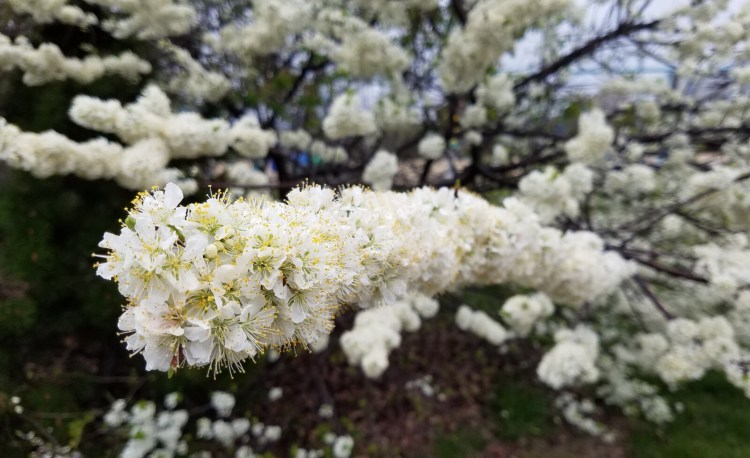It is now pretty much a given that if wildlife is not eating your plants, you are growing the wrong ones. Douglas Tallamy was not the first person to say that when his “Bringing Nature Home” was published in 2009, but a lot more people received the message because of his book.
Another gardening trend is people landscaping by growing their own food rather than plants that are merely attractive.
So, how can people feed wildlife while also feeding themselves? It has a lot to do with sharing, just as we were taught in kindergarten.
Eric Topper, director of education for Maine Audubon Society, said in a recent telephone interview that gardeners should grow plants that meld as many priorities as possible. The classic example is to grow what he called the big three: strawberries, blueberries and brambles, a category that includes blackberries and raspberries.
“Those native fruiting plants are host to hundreds and hundreds of species of caterpillars,” he said.
Those caterpillars, which will eat some of the plants’ leaves but won’t hinder the production of the fruit people like to eat, will transform over time into butterflies and moths that are even prettier than the most beautiful flowers in the garden.
“If you can beat the gray squirrels to them, you can get a good crop of strawberries,” Topper said.
I noted that chipmunks are the bigger problem in our garden although I have enjoyed watching gray squirrels chase each other in our yard all winter. Yes, I spent a lot of the winter gazing out the window. Anyway, both species are native and essential for the health of the ecosystem.
Strawberries make an excellent ground cover, Topper went on to say, serving a double purpose. I asked about putting netting over the berries to prevent birds from getting to them. Breeding birds use these native fruits as an important source of food, he replied, but they usually don’t pick the bushes clean; they leave enough for people to eat. It would be OK to cover some bushes, he said, but he hopes home gardeners will leave most of them uncovered for the wildlife.
Speaking from personal experience back in the days when I occasionally mowed my mother-in-law’s lawn – she grew high-bush blueberries – the netting can also be a problem if it gets caught up in the mower.
Among less common fruit, Topper especially likes the beach plum, Prunus maritima, in part because it’s listed by the state as critically imperiled. The plant is threatened by beach development, according to the state website: too many houses have been built on the beaches where it used to thrive. Despite its name, though, beach plum doesn’t have to grow on a beach. Any sunny spot with sandy soil will do, Topper said, and with its pretty white flowers in May, it could be attractive in many landscapes. Beach plum usually grows about six feet tall, tends to spread horizontally, and produces red to purple fruit that wildlife like to eat, but people can, too.
The plants I’ve mentioned so far are native to Maine. Native plants are said to be most beneficial to native wildlife; the two co-evolved over millenniums so that native animals and pollinators rely on the plants for food and habitat.
But Topper did recommend one plant not native to the region that he said is suitable for Mainers and animals to share: Jerusalem artichoke, also called sunchoke (botanical name: Helianthus tuberosus). Wabanaki tribes were growing it when the Europeans arrived and probably thousands of years before that. Some experts think it reached the region through trade between local tribes and tribes much farther west and south. Jerusalem artichokes are a tall, back-of-the-border plant with yellow daisy-shaped blooms.
Caterpillars like to eat the leaves, and people like to eat the tubers.
Also, sunchokes are gorgeous.
Tom Atwell is a freelance writer gardening in Cape Elizabeth. He can be contacted at: tomatwell@me.com
Send questions/comments to the editors.


